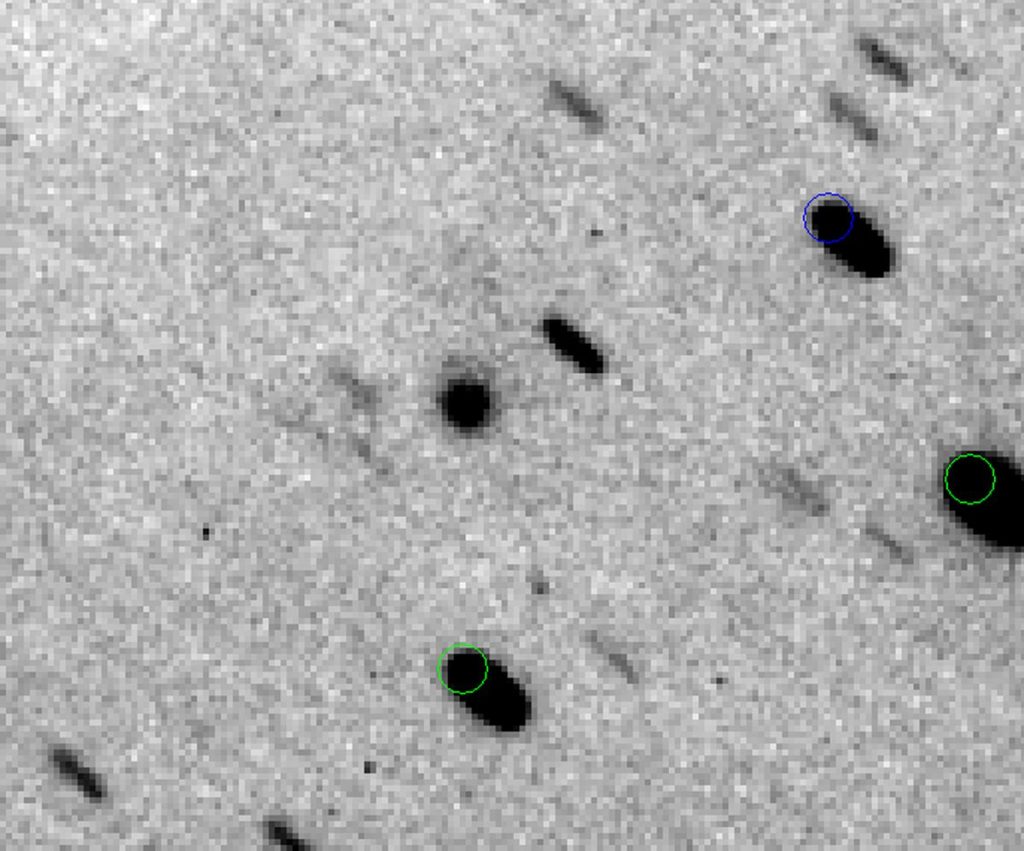more information
A team of astronomers has discovered a giant comet crossing the solar system. The object is named 2014 UN271Its length is between 100 and 300 kilometers, according to one of its discoverers, the Brazilian Pedro Bernardinelli of the University of Pennsylvania (USA). The size is so unusual that experts initially wondered whether it was a small planet – Pluto’s diameter is 2,370 kilometers – or a massive comet. On Tuesday, Bulgarian astrophysicist Rosita Kokutanikova of the European Southern Observatory confirmed that it’s a massive comet.
The object was identified on June 19 from data collected between 2014 and 2018 by the Inter-American Observatory in Cerro Tololo, Chile. The average distance between a comet is currently 20 times that of the Earth and the Sun, but it is estimated that by January 2031, that separation will be halved. If its size is confirmed, it is the largest comet observed in the solar system in modern times, for which there are scientific records, explained researcher Luisa Lara, of the Andalusian Institute for Astrophysics (CSIC). The famous comet Hale-Bopp, which became a sight with the naked eye in 1997, has a diameter of 60 kilometers. Comet Halley, observed in 1986, was 10 km long.
Lara says the closest point in 2014’s orbit UN271 will be at the height of Saturn in 2031. “No one expects to see a huge ball in the sky during the day,” astrophysicists warn. The comet comes from the Oort cloud, an examination of the billions of frozen objects that surround the Solar System like an envelope. Comets are balls of ice and rock, remnants of the origin of our planetary system, 4.6 billion years ago.
Support producing news like this. Subscribe to EL PAÍS for 30 days for 1 USD
click here
The new object was discovered thanks to Dark Energy Mapping, a project by 400 scientists in seven countries to identify hundreds of millions of galaxies. The search for the comet took 20 million hours of computer data processing, according to Bernardinelli.
Also Tuesday, thanks to observations with the Namibian SkyGems telescope, Italian astronomer Luca Pozzi confirmed that 2014’s UN271 object has “obvious comet activity,” including a coma, the characteristic cloud of dust and gas that surrounds the heart of a comet.
In 2019 the European Space Agency launched the Comet Interceptor mission, which will be launched in 2028 to study a yet-to-be-identified comet. The spacecraft will be parked in space, waiting for something suitable. Astrophysicist Luisa Lara, who is coordinating the Spanish engagement, rules out the possibility of directing the European mission to 2014 UN271, too far away.
The researcher recalls that the technology for detecting celestial bodies has leaped in quality, allowing in a short time such achievements as observing Oumuamua, a 200-meter interstellar asteroid, and comet 2I / Borisov from another star system. . “Now nothing escapes us. I’m convinced we’ll see more in a few months. It’s just a matter of looking and they’ll be there,” he says.
Support our press. Subscribe to EL PAÍS by clicking here
Participation Here To receive the daily newsletter from EL PAÍS Brasil: reports, analysis, exclusive interviews and key information for the day in your email, from Monday to Friday. Participation Also to receive our weekly newsletter on Saturday, with the highlights of the week’s coverage.

“Hardcore beer fanatic. Falls down a lot. Professional coffee fan. Music ninja.”






More Stories
The law allows children and adolescents to visit parents in the hospital.
Scientists pave the way for the emergence of a new element in the periodic table | World and Science
Can dengue cause hair loss? Expert explains how the disease affects hair